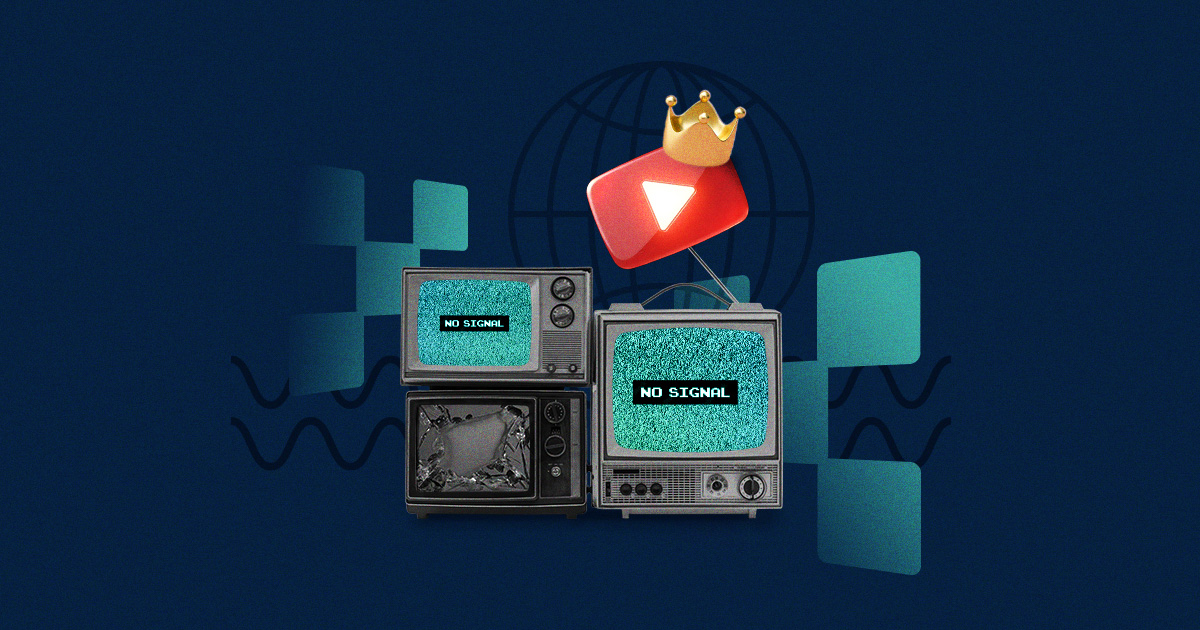
A new year is a chance to reevaluate your brand’s marketing efforts: evaluate strengths and weaknesses, analyze competitors, and review budgets. And when it comes to budgets, determining advertising spend and where to put those dollars is more complicated than ever. With infinite content options and limited time and attention, consumers are easily fatigued by brands’ advertising efforts. In 2024, brands will need to cut through the noise and provide ad content that resonates with their audience while placing those messages on platforms where they are most likely to receive them.
Where Brands Should Be Advertising
When planning a media strategy, start by asking three questions.
1. What Are You Selling?
If your brand’s product or service has a broader appeal, a campaign typically is more effective when using traditional media. On the other hand, if your product or service appeals to a very specific audience, a digital campaign would allow you to reach those audiences on a more granular level through specific targeting parameters.
2. What Are Your Goals?
If the objective is to create awareness about your brand, product, or service, traditional media achieves that more efficiently.
Traditional media, however, is a one-way conversation. If the goal is to interact with your audience, a digital campaign enables multiple touchpoints throughout the user journey.
No matter your priority, setting measurable goals prior to launching will help you determine the success of the campaign, as well as provide guidance on approaching your next one.
3. Who Is Your Target Audience?
Stereotypically, older generations are more likely to engage with traditional media, whereas younger audiences will likely have a more significant and active online presence.
Either way, brands need to research their product’s audience and determine what types of media index high for their consumption habits. (Many agencies, including ours, already have access to this data—so if you’re looking to target a specific demographic or psychographic, reach out to our team.)
Ideally, a Media Plan Includes a Mix of Both Traditional and Digital Media
Of course, most companies benefit from utilizing a mix of both traditional and digital media. If there is enough budget to run a campaign on both channels effectively, brands can leverage the strengths of each, guiding consumers down the sales funnel.
Start your audience down that funnel by running creative on traditional media to create awareness to a broad audience, then segment your audience on digital platforms to deliver tailored messages and creative.
Optimizing Current Media Campaigns
Budget cuts? No problem—here are ways to optimize your advertising budget to get more out of your current strategies.
How to Optimize Your Traditional Media Strategy
Consider Your Placements
If your business is already advertising on television or radio, identify key viewing and listening times that can increase your messaging output. It’s also beneficial to analyze the channels and stations you’re partnered with to ensure your target audience still engages with those channels.
Negotiate Everything
A rate card is more of a guideline than a rule—always ask for a lower rate, extra ad placements, or a discount for running on multiple channels. Existing relationships go a long way regarding negotiations, which is another great reason to loop in an agency with media partnerships already in place.
Leverage Sponsorships
Traditional media placements can be costly—consider sponsoring a segment, event, or activity in the community to stretch media dollars, strengthen your relationship with your media partners, and create a positive association with your brand. A sponsorship can also provide rate protection during heavy political spending periods, which is expected this year—a win-win!
How to Optimize Your Digital Media Strategy
Tweak with Targeting Tools
Use data analytics tools and first-party data to refine your audience segmentation and deliver to your most relevant and valuable prospects. Ideally, that data provides a holistic view of results. Our proprietary data and analytics platform, OHIQ, aggregates reporting across all channels to build actionable insights, test and learn strategies, and create recommendations for the campaign moving forward. Our proprietary data and analytics platform, OHIQ, aggregates reporting across all channels (including traditional channels) to build actionable insights, test and learn strategies, and create recommendations for the campaign moving forward.
Try and Try Again
A/B test your campaigns with creative, media channels, and copy variables to discover what resonates with your audience—then deliver the version that is most likely to achieve your KPIs.
Testing New Channels
Advertising on a new channel can feel a bit like jumping into the deep end without a flotation device—to test the waters properly, you have to take the leap, especially on channels that emerge this year and beyond. In 2024, as new players arrive on the scene in digital and social media, you’ll need to conduct thorough research before rushing to establish your presence. First, understand the new channel’s demographics and user behavior, then determine if that channel makes sense for your brand.
Align with Best Practices
Once your brand decides to onboard a new channel, you must create content specifically for that channel and understand the best practices regarding creative types, ad formats, and copy. The content needs to resonate with the audience on that channel.
Monitor and Analyze Performance
A new channel needs to be nurtured and monitored for performance. Utilize analytics tools to track your pilot campaign’s key metrics, pull insights, and apply them to your current and future campaigns. Aggregated media analytics tools can help compare performance on the new channel with key benchmarks and campaign performance on existing channels.
Advertising During an Election Year
In an election year, demand (and cost) for advertising space skyrockets, especially in traditional channels such as TV and radio. Brands will need to tweak their advertising strategy as the election season approaches.
Lean into CTV
While the traditional television market will be saturated with political ads, CTV platforms offer a less crowded space, reducing ad clutter.
Long-Term Contracts
Lock your rates in for the year with an annual contract to avoid seasonal spikes in costs.
Leverage Programmatic Advertising
Another tactic to combat the rise in advertising costs during an election year is to utilize programmatic advertising. Leverage real-time bidding to buy and sell ads on a per-impression basis in an auction to respond to changes in the advertising landscape. In addition, bid optimizations such as dayparting (scheduling ads to run during specific times or days of the week) can help stretch media dollars.
Cross-Device Targeting
Since programmatic advertising delivers content on all devices, advertisers can reach their target audience multiple times through multiple touchpoints to help drive messaging throughout a campaign and increase cost efficiency.
There’s no one-size-fits-all answer when it comes to determining a media budget and plan—ultimately, brands have to know their audience and their industry. If you’re looking for audience data and analytics, want to analyze your current media strategies, or learn more about the benefits of utilizing our proprietary data and analytics platform, OHIQ, set up a meeting with our team to find out how we can help.




